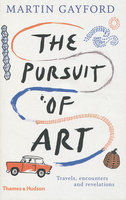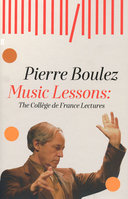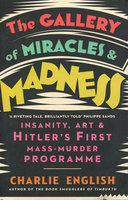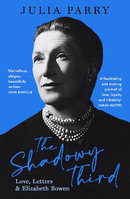From 1931 to 1949, Julian Levy's New York gallery played an essential role in the shift of the avant-garde from Paris to America. It championed experimental film and photography and served as a venue for artists fleeing Europe and Hitler. It presented the first New York exhibitions of artists such as Henri Cartier-Bresson, Joseph Cornell, Frida Kahlo, Salvador Dalí, Arshile Gorky, Lee Miller, René Magritte, and Dorothea Tanning, all the while promoting a vision of art at its broadest. There were 'idea shows' suggested by such critical thinkers as André Breton and Marcel Duchamp, as well as shows about fashion, design, dance, popular culture and even music including a performance by Paul Bowles. It was also a place to watch the identity of the art gallery as a commercial institution taking shape, from a mere curiosity shop full of books, prints and lampshades among the first wares, to a contemporary art gallery - naked, white and modern. All this history argues for the need to read Levy's memoirs afresh. He tells the world he lived in with wit and appetite in a book that deals in sensual adventure; Levy was devoted to Surrealism, to Duchamp and Alfred Stieglitz, whom he claimed as his godfathers in art. Both men were high priests of early Modernism, prone to sermonising and wearing capes and to be reverent, especially of photography, then a new medium of dubious aesthetic standing. Duchamp inducted the young man into the living pleasures of both media when he invited him to tag along on a trip to Paris. On board ship, the two men speculated on the makings of a self-lubricating mechanical woman and discussed plans to shoot a film using Man Ray's equipment. The film was never made, but the trip altered the course of Levy's life and his co-travellers as artists, dealers, publishers, curators, writers and lovers of printed matter passed all their inclinations on to the young Levy. Besides running a gallery for almost 19 years, Levy wrote extensively and helped create exhibitions throughout his life with a high sense of style. There are tales of luminaries like James Joyce and incendiary episodes such as Duchamp's Kiss and Levy's purported rescue of Eugène Atget's great photographic archive of Paris. Levy slightly glorified his early investment and enthusiasm for the work at the expense of Berenice Abbott's essential role. Levy introduced Yves Tangui to New York, conceived the idea for Dalí's 'Birth of Venus' Pavilion at the World's Fair, shared a summer house with Max Ernst and fished with André Breton. He was with Gorky in the final tragic days before the painter's suicide. The memoir is a story of prescient vision and lifelong devotion. 320 page paperback, 32 pages of black and white photos, 2003 first edition US paperback facsimile of the original 1977 publication.
Additional product information







